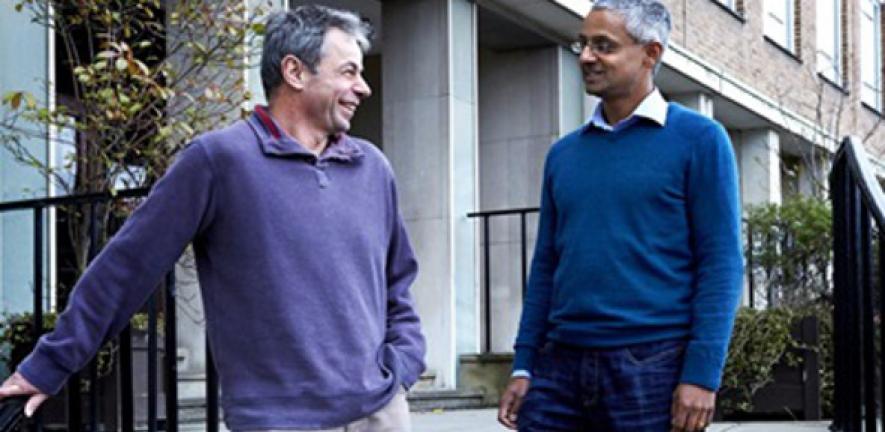
The Royal Medals are one of the Royal Society’s premier awards and are made on behalf of the Queen each year
Sir Shankar and David’s legendary discussions in the department’s local pub led to their invention of the leading next generation sequencing methodology, now known as Solexa sequencing, that has made routine, accurate, low-cost sequencing of human genomes a reality, revolutionising biology and genomic medicine.
Sir Shankar says: “I feel hugely honoured to be awarded the Royal Medal and it is humbling to see the previous recipients. I am deeply thankful to the many co-workers and collaborators who have made my scientific explorations so enjoyable and fruitful and continue to do so.”
David adds: “The development of Solexa sequencing was a massive team effort and would not have been possible without the collective contribution of a wide number of highly talented individuals. I am delighted that this achievement has been recognised by this award.”.
Sir Shankar and David join the ranks of Fred Sanger, Max Perutz and Francis Crick who also received the award, which was founded by HM King George IV in 1825. Between 1826 and 1964 two medals were awarded each year for the most important contributions to the advancement of “Natural Knowledge” in the physical and biological sciences and in 1965 a third medal, covering the applied sciences, was introduced on behalf of HM The Queen.
Head of Department John Pyle, congratulating the two scientists, said: "This is wonderful news and well-deserved recognition for Shankar and David's development of the new generation of gene-sequencing techniques. This is a great example of fundamental curiosity-driven chemistry leading to the transformation of biology and medicine around the world.”
More recently the Balasubramanian research group has been inventing and applying new chemical methods to study epigenetic changes to DNA bases including single base resolution sequencing of 5-formylcytosine, 5-hydroxymethylcytosine and 5-methylcytosine, while the Klenerman group is developing single-molecule fluorescence techniques to probe the molecular basis of neurodegenerative disorders such as Parkinson’s disease.
This year's two other Royal Medal recipients were Stephen Sparks FRS for his contributions to our understanding of volcanoes, and Lewis Wolpert CBE FRS for his research on morphogenesis and pattern formation that led to the concept of positional information in embryonic development.
Brian Foster, Vice President of the Royal Society, said: “The Royal Society has a long-standing tradition of identifying and celebrating the best and brightest scientists. The winners of this year’s medals and awards have all made outstanding contributions to their field. I congratulate them for their distinguished work and their contribution to the advancement of science as a whole.”

